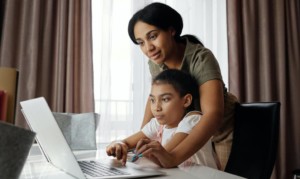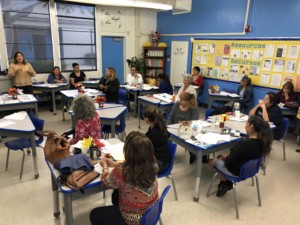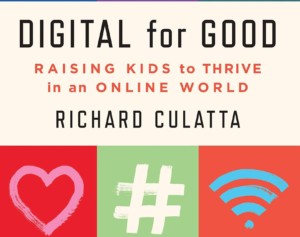Advice for Analog Parents with Digital Kids

“Our teachers hopefully have hours and hours of support and training for integrating [technology] into the classroom, but what help are parents getting?” This is an important question posed in Educating Parents in the Siri Generation, a blog post by Carl Hooker that explores how “analog parents” can rise to meet the challenges of their “digital kids.”
It’s this exact problem–the difference the learning environments that most parents experienced versus the ones in which their children are learning in–that formed the basis of our Smart Parents series and culminating book project (launching in August 2015).
If you’ve been around the edu-innovation space for awhile, you’ve probably come across Carl Hooker–or @MrHooker as many of us know him. With a title like Director of Innovation and Digital Learning (Eanes ISD, Texas), he knows a thing or two about the next generation of teaching and learning.
Here are some pearls of wisdom from his perspective as a parent and an administrator in a one-to-one mobile device district.
On school – parent communication:
“The lines between home and school have been forever blurred and perhaps it’s time to revert back to the old mantra of ‘It takes a village to raise a child.’ Schools need to be having conversations with parents about the digital responsibilities their kids need to be adopting. Especially in school districts with mobile device initiatives—whether it be one-to-one or BYOD—parents need to have a voice in the learning process. I’d argue that we need to take it a step further and provide parents with some level of support, much like we do with teachers.”
On the importance of modeling:
“While parents may try and create these new guidelines in clever ways (like this article on kids earning their wifi password), they often don’t model the behavior they want their kids to follow. I’ve been in countless playgrounds, museums, and aquariums where I see kids interacting and having fun while their parents check Facebook pages or text friends. Yet we complain about our kids with their noses in their phones. We need to look in the mirror before looking out the window sometimes…If parents are modeling the same things at home that are happening at school, kids will see the use of technology not as a toy but as a learning tool. In return, parents can gain some new skills to mesh with the old and help them survive this transition to the new digital world of parenting.”
On what’s universal about parenting, even in the digital age:
“Many of the same tenets of classic or analog parenting can help us still today. Think about it this way—if you have a dozen cupcakes sitting out on the countertop, do you let your kids eat all of them? The same can be said with screen time or time online. Guidelines and limits are a part of parenting, whether it be digital or analog. Technology can actually help with this in terms of lock screens and time limit trackers. It can provide some data for kids to learn how to be self-sufficient, but only if there are consistent guidelines and expectations.”
For more information on raising digital kids from our Smart Parents series, see:
- How To Keep Children From Drowning in the Device Deep End
- How Parents Decide Which Education Materials Work
- Parenting for Powerful Learning: 35 Tips
Heading to ISTE? Catch Carl’s session “Raised by Siri: A Course in Digital Parenting” on Monday 6/29 and don’t forget to follow @MrHooker on Twitter.





0 Comments
Leave a Comment
Your email address will not be published. All fields are required.